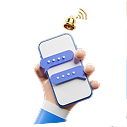 blog.by Nadine Mohamed
blog.by Nadine Mohamed
In today’s increasingly globalized educational environment, multilingual classrooms have become the norm rather than the exception. Students and educators alike face unique challenges when multiple languages are spoken in the same learning space, especially when it comes to effective note-taking. Clear, organized, and accessible notes are essential for comprehension, revision, and academic success. Fortunately, the digital age has brought a wealth of online tools designed to support note-taking in these linguistically diverse settings.
This article explores some of the best online tools that cater to multilingual note-taking needs, how they enhance learning, and practical tips for choosing and using these technologies effectively. Whether you’re a student juggling multiple languages or an instructor seeking to help your diverse classroom, the right digital tools can transform how information is captured, processed, and shared.
Why Note-Taking in Multilingual Classrooms Is Unique
Taking notes in a classroom where several languages are spoken presents challenges beyond the typical academic setting. Students might need to:
- Capture information in more than one language during lectures or group discussions.
- Translate or transcribe notes quickly to keep up with the lesson.
- Share notes with classmates who speak different languages.
- Organize and retrieve information efficiently despite language barriers.
Additionally, teachers may need to prepare multilingual resources or support students with varied language proficiency levels. Traditional pen-and-paper note-taking can be slow, fragmented, or difficult to organize under these circumstances.
Key Features to Look for in Multilingual Note-Taking Tools
Before diving into specific tools, understanding what features best support multilingual classrooms is helpful:
- • Multilingual support: The tool should allow you to type, read, and switch between multiple languages seamlessly.
- • Translation capabilities: Integrated or easy-to-access translation features help bridge language gaps.
- • Speech-to-text and voice recognition: Useful for transcribing spoken words in various languages, making notes more efficient.
- • Collaboration options: Sharing and co-editing notes with peers from different linguistic backgrounds encourages inclusivity.
- • Cloud synchronization: Accessing notes from multiple devices and locations supports flexible study habits.
- • Annotation and organization tools: Highlighting, tagging, and categorizing notes aid in managing multilingual content.
Top Online Tools for Multilingual Note-Taking
1. Microsoft OneNote
Microsoft OneNote is a versatile note-taking application that supports typing, handwriting, audio recordings, and image annotation. It allows users to create notebooks, sections, and pages to keep notes well-organized. OneNote’s language settings can be adjusted for spell-check and text prediction in multiple languages, making it easy to switch between languages within the same document.
OneNote also integrates with Microsoft Translator, which enables real-time translation of selected text into over 70 languages. This feature is especially useful in multilingual classrooms, allowing students to understand notes written in a language unfamiliar to them. Furthermore, OneNote’s collaboration tools let multiple users edit shared notebooks simultaneously, fostering inclusive group study.
2. Google Keep and Google Docs
Google’s suite of productivity tools is widely accessible and supports multiple languages natively. Google Keep is excellent for quick note-taking with color-coded labels, voice notes, and reminders. It supports typing and voice input in various languages and integrates well with Google Docs for more extensive writing.
Google Docs offers powerful multilingual tools such as built-in translation, voice typing in multiple languages, and smart spelling and grammar suggestions tailored to the selected language. With real-time collaboration features, students can share notes, provide comments, and co-edit documents regardless of their language backgrounds.
3. Evernote
Evernote is a long-standing note-taking app known for its robust organization features. It supports typing notes in multiple languages and includes a search function that can recognize typed and handwritten text in various scripts, including Latin, Chinese, and Arabic.
While Evernote doesn’t have built-in translation, it integrates well with browser-based translators and other apps. The ability to clip web content, record audio notes, and annotate PDFs adds versatility for multilingual learners. Evernote also offers shared notebooks for collaborative learning.
4. Notion
Notion is an all-in-one workspace that combines note-taking, task management, and databases. Its flexible interface allows users to create pages with text, images, tables, code snippets, and more. Notion supports multiple languages and enables easy switching between them in the same workspace.
While Notion doesn’t feature native translation or voice typing, it’s compatible with browser extensions that provide translation services. Its collaborative nature makes it ideal for multilingual classrooms, where students can share structured notes, organize study materials, and manage projects together.
5. Otter.ai
Otter.ai is a specialized tool that uses AI-powered transcription to convert speech into text in real time. It supports multiple languages and accents, making it invaluable for multilingual lectures or discussions. Students can record lectures and get searchable, editable transcripts instantly, reducing the pressure to take rapid notes.
Otter.ai also allows users to highlight key points, add images, and share transcripts with classmates. Its integration with Zoom and other video platforms further extends its usefulness in virtual or hybrid multilingual classrooms.
How to Use These Tools Effectively in Multilingual Settings
Simply having access to these tools is not enough. Maximizing their benefits requires thoughtful use tailored to multilingual environments:
- Experiment with language settings: Customize spell-check, autocorrect, and keyboard input for each language you use.
- Leverage translation features wisely: While automated translation is convenient, always double-check for accuracy, especially with technical or academic terms.
- Combine audio and written notes: Use speech-to-text for real-time capturing and supplement with typed or handwritten annotations.
- Organize notes by language or topic: Create separate sections or tags to keep multilingual content structured.
- Encourage collaborative note-taking: Sharing notes among classmates with diverse language skills promotes mutual understanding.
- Backup your notes regularly: Use cloud storage options to prevent data loss and allow access from multiple devices.
Challenges and Limitations to Consider
Despite advances, online note-taking tools have some limitations in multilingual classrooms:
- Translation errors: Automated tools sometimes struggle with context, idioms, or technical jargon, which may lead to misunderstandings.
- Speech recognition accuracy: Accents, background noise, and multiple speakers can affect transcription quality.
- Internet dependency: Many tools require stable internet connections, which may be problematic in some regions or institutions.
- Learning curves: Some students or educators might need time to become proficient with new software.
Future Trends in Multilingual Digital Note-Taking
Technology is rapidly evolving, promising even more powerful tools for multilingual education. AI advancements are leading to improved natural language processing, making translations more accurate and voice recognition more context-aware. Integration of augmented reality (AR) and virtual reality (VR) may soon enable immersive language learning environments where notes and resources adapt dynamically to the user’s language preferences.
Personalized learning platforms that adjust content and note formats based on linguistic backgrounds will enhance inclusivity further. Additionally, cross-platform synchronization and open-source note-sharing networks will facilitate global collaboration among multilingual students and educators.
Using the right online tools for note-taking can significantly improve the learning experience in multilingual classrooms. These tools help bridge language barriers, promote collaboration, and make complex information more accessible. By integrating technology thoughtfully into your study habits, you can unlock new levels of understanding and academic success in a multilingual world.
Are you ready to get started and study abroad? Just browse through more than 110,000 diverse programs worldwide, Educatly offers a diverse array of educational opportunities tailored to your interests and career goals.
Signing up is easy! Simply create a profile and explore our extensive database to find the perfect program for you. Whether you're drawn to renowned universities in bustling cities or serene campuses in scenic locations, Educatly ensures you'll find a match that suits your aspirations.To receive personalized guidance every step of the way, schedule a free consultation with one of our experienced educational advisors. They're dedicated to helping you navigate the application process, understand visa requirements, and secure scholarships or financial aid, ensuring you access top-tier educational opportunities with confidence.




 blog.feedback.yes
blog.feedback.yes blog.feedback.no
blog.feedback.no